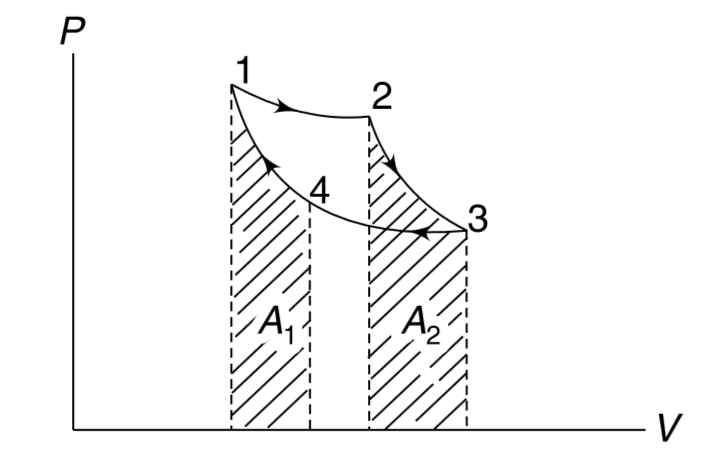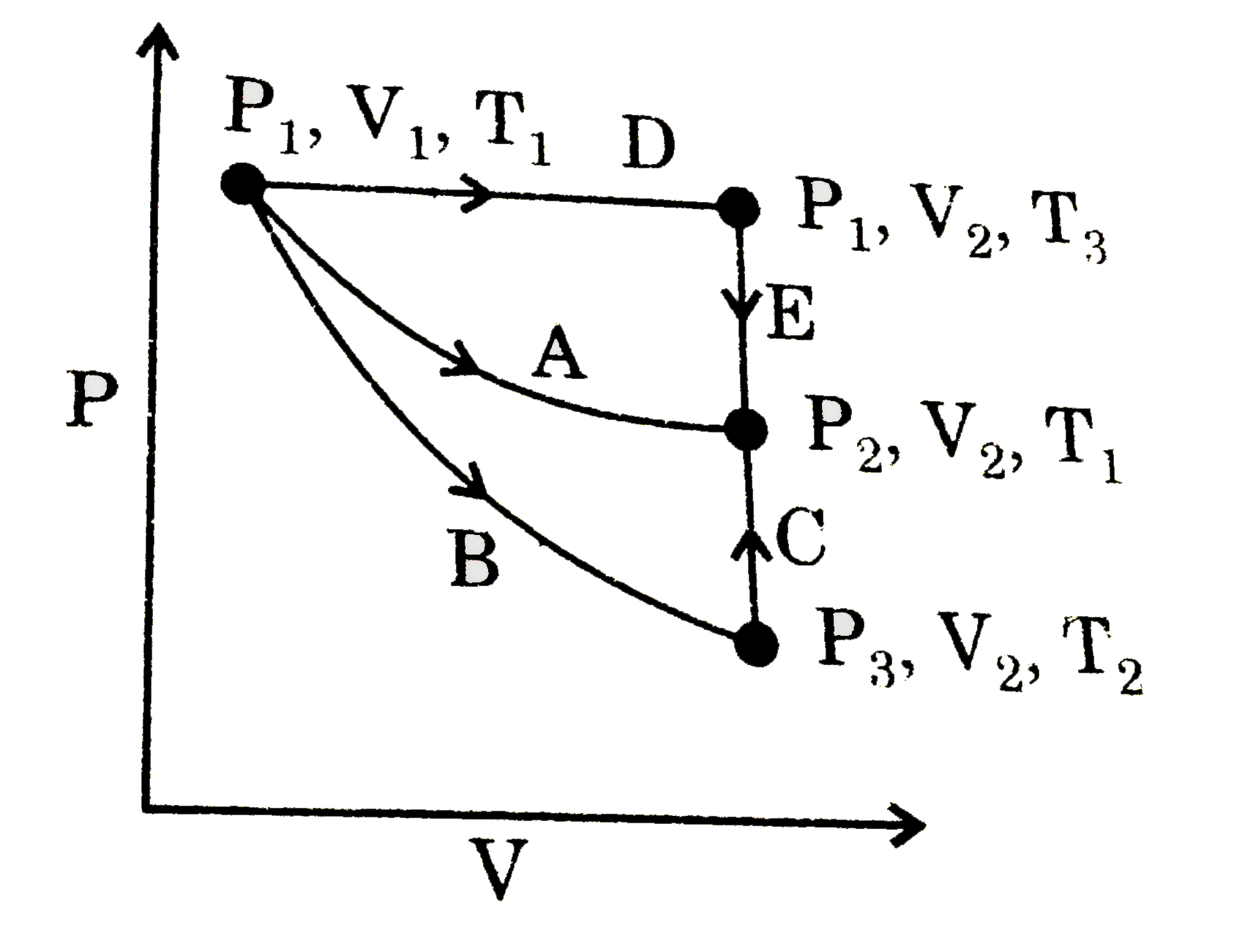An ideal diatomic gas is caused to pass through a cycle shown on the P−V diagram in figure, where V2=3.00V1. If P1,V1,and T1 specify the state 1, then the temperature of the state 3 is

(T1/3)1.4
T1/31.4
T1/30.4
cannot be determined
The correct Answer is:C
Step by step video, text & image solution for An ideal diatomic gas is caused to pass through a cycle shown on the P-V diagram in figure, where V_(2) = 3.00V_(1). If P_(1),V_(1),and T_(1) specify the state 1, then the temperature of the state 3 is by Chemistry experts to help you in doubts & scoring excellent marks in Class 11 exams.
Updated on:21/07/2023Topper's Solved these Questions
- MISCELLANEOUS (TOPICS OF GENERAL INTEREST)BOOK - OP TANDONCHAPTER - MISCELLANEOUS (TOPICS OF GENERAL INTEREST)EXERCISE - SET-V: Matching type Questions
37 Videos
- INTRODUCTION TO ORGANIC CHEMISTRY BOOK - OP TANDONCHAPTER - INTRODUCTION TO ORGANIC CHEMISTRY EXERCISE - SINGLE INTEGER ANSWER TYPE
4 Videos
- OXIDATION AND REDUCTION (REDOX REACTIONS)BOOK - OP TANDONCHAPTER - OXIDATION AND REDUCTION (REDOX REACTIONS)EXERCISE - SECTION V
3 Videos
Similar Questions
One mole of an ideal diatomic gas is taken through the cycle as shown in the figure.

1→2: isochoric process
2→3 : straight line on P - V diagram
3→1: isobaric process
The average of molecular speed of the gas in the states 1, 2 and 3 are in the ratio
View SolutionThe figure shows a Carnot cycle for an ideal gas on a P-V diagram. Which of the areas A1 or A2 is larger?

View Solution
Knowledge Check
An ideal diatomic gas is caused to pass throguh a cycle shown on the P−V diagram in figure, where V2=3.00V1. If P1,V1,and T1 specify the state 1, then the temperature of the state 3 is
 A(T1/3)1B(T1/3)4C(T1)(1/3)0.4D(T1/3)2
A(T1/3)1B(T1/3)4C(T1)(1/3)0.4D(T1/3)2One mole of an ideal diatomic gas is taken through a process whose P−V diagram is shown in the figure. The work done by the gas is
 AπP0V0+2P0V0BπP0V02+P0V0C2πP0V0+P0V0DπP0V0√2+P0V0
AπP0V0+2P0V0BπP0V02+P0V0C2πP0V0+P0V0DπP0V0√2+P0V01 mole of an ideal gas in a cylindrical container have the P-V diagram as shown in figure.If V2=4V1 then the ratio of temperatures T1T2 will be
 A12B14C32D34
A12B14C32D34
Water is flowing through a pipe as shown in figure. If P1,P2andP3 are pressures and v1,v2andv3 are velocities of water at the different sections as shown in figure, then

View SolutionA process 1→2 using monoatomic gas is shown on the P-V diagram on the right P1=2P2=106N/m2,V2=4V1=0.4m3 The heat ansorbed by the gas

View SolutionFor an ideal monoatomic gas, an illustration of three different paths A,(B+C) and (D+E) from an initial state P1,V1,T1 to a final state P2,V2,T1 is shown in the given figure .

Path A represents a reversible isothermal from P1V1 to P2,V2, path (B+C) represent a reversible adiabatic expansion (B) from P1,V1,T1 to P3,V2,T2 followed by reversible heating of the gas at constant volume (C) from P3,V2,T2 to P2,V2,T1. Path (D+E) represents a reversible expansion at constant pressure P1(D) from P1,V1,T1 to P1,V2,T3 followed by a reversible cooling at constant volume V2(E) form P1,V2,T3 to P2,V2,T1
What is qrev for path (A)?
View SolutionFor an ideal monoatomic gas, an illustration of three different paths A,(B+C) and (D+E) from an initial state P1,V1,T1 to a final state P2,V2,T1 is shown in the given figure .

Path A represents a reversible isothermal from P1V1 to P2,V2, path (B+C) represent a reversible adiabatic expansion (B) from P1,V1,T1 to P3,V2,T2 followed by reversible heating of the gas at constant volume (C) from P3,V2,T2 to P2,V2,T1. Path (D+E) represents a reversible expansion at constant pressure P1(D) from P1,V1,T1 to P1,V2,T3 followed by a reversible cooling at constant volume V2(E) form P1,V2,T3 to P2,V2,T1
What is ΔS for (D+E)?
View SolutionFor an ideal monoatomic gas, an illustration of three different paths A,(B+C) and (D+E) from an initial state P1,V1,T1 to a final state P2,V2,T1 is shown in the given figure .

Path A represents a reversible isothermal from P1V1 to P2,V2, path (B+C) represent a reversible adiabatic expansion (B) from P1,V1,T1 to P3,V2,T2 followed by reversible heating of the gas at constant volume (C) from P3,V2,T2 to P2,V2,T1. Path (D+E) represents a reversible expansion at constant pressure P1(D) from P1,V1,T1 to P1,V2,T3 followed by a reversible cooling at constant volume V2(E) form P1,V2,T3 to P2,V2,T1
What is ΔS for path (A)?
View Solution
